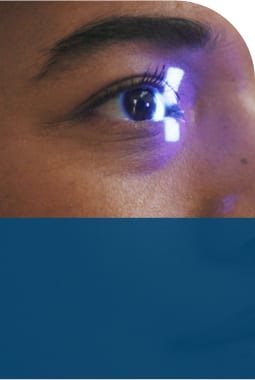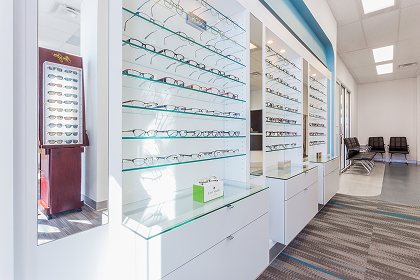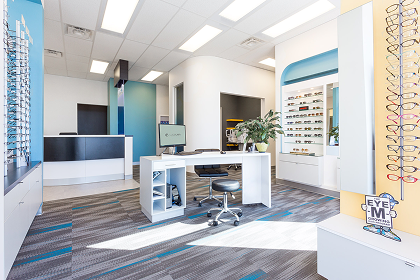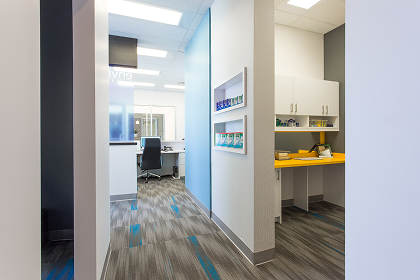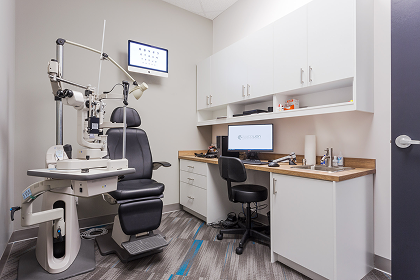If you rely on glasses or contact lenses, keeping your prescription current is key to seeing clearly and comfortably. Whether you’re managing blurry distance vision, trouble up close, or astigmatism, regular eye exams help protect both your sight and your overall eye health.
In most cases your prescription is valid for 1 year—but that can vary based on your age, your eyes, and any changes in your vision. Let’s take a closer look so you know when it’s time to book your next eye exam.
How Long Is an Eye Prescription Valid?
An eye prescription is typically valid for 1 year, but the exact duration is determined by your optometrist at the time of your eye exam. They consider several factors—such as your age, the type of prescription, whether you wear glasses or contact lenses, and any changes in your eye health—to decide how long your prescription should remain valid. In many cases, prescriptions for glasses or contacts are valid for 1 year. However, even if your prescription hasn’t technically expired, that doesn’t mean it’s still accurate. Regular eye exams help keep your prescription current and allow your optometrist to monitor for early signs of eye conditions.
Getting a Prescription After Your Eye Exam
When you visit an optometrist, they perform a series of tests to assess your vision and determine the most accurate prescription for your eyes. This process includes measuring how well you see at different distances and checking for common vision issues like nearsightedness, farsightedness, and astigmatism. Your optometrist will also evaluate the overall health of your eyes to detect any conditions that may impact your vision.
If you wear contact lenses, your optometrist will also check for proper fit to ensure that your lenses are comfortable and safe for daily wear.
What Affects the Validity of Your Eye Prescription?
The validity of your eye prescription refers to how long it can legally be used to order glasses or contact lenses. This duration is set by your optometrist at the time of your eye exam and may vary depending on your vision needs and health. In contrast, accuracy refers to how well your prescription reflects your current vision and this can change before the prescription expires.
While only your optometrist can determine how long your prescription is valid, several factors may affect how long it remains accurate:
1. Age
As you get older, your eyes naturally change. Many people begin needing reading glasses after age 40 due to presbyopia, when the eye’s lens loses its ability to focus on nearby objects. If you’re over 40, visiting your optometrist annually (or as recommended) can help track these age-related changes.
2. Type of Prescription
The type of vision correction you need can impact how often your prescription changes. People with myopia (nearsightedness) or astigmatism may notice more frequent changes. Children’s vision can change annually as their eyes develop, while adults with hyperopia (farsightedness) may experience fewer shifts over time.
3. Injuries or Surgeries
Eye injuries or surgeries—such as cataract surgery—can significantly affect your vision. If you’ve had any eye emergencies or procedures, your optometrist will need to monitor your prescription closely to determine if it’s still accurate.
4. Lifestyle Factors
Your daily habits can also influence your vision. Frequent screen use, poor nutrition, and smoking can contribute to eye strain or other health issues that may alter your prescription. If you notice visual discomfort during your routine, it might be time to revisit your optometrist.
5. Health Conditions
Systemic health issues like diabetes or high blood pressure can impact the blood vessels in your eyes and lead to vision changes. If you have a health condition that affects your eyes, more frequent check-ups may be necessary to keep your prescription up to date.

Why Regular Eye Exams Matter
Eye exams go beyond just updating your glasses or contact lens prescription—they give your optometrist the chance to check for early signs of eye conditions that could affect your vision in the long run.
Conditions like glaucoma, cataracts, and macular degeneration often develop without obvious symptoms at first. Early detection can make a big difference in preserving your vision and preventing more serious issues down the road.
Whether it’s been a year or longer since your last exam, staying on top of your eye health with regular check-ups is one of the most effective ways to protect your sight.
Stay on Top of Your Prescription & Eye Health
While your prescription might still be valid on paper, your eyes could be telling a different story. Regular visits to your optometrist help ensure that your vision stays clear, your prescription remains accurate, and any early signs of eye conditions don’t go unnoticed.Staying proactive with your eye care isn’t just about updating your glasses or contacts—it’s about protecting your long-term vision and overall eye health. If it’s time for your next exam, book your appointment today—the team at Envision Eye Care is here to help.







